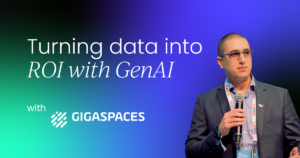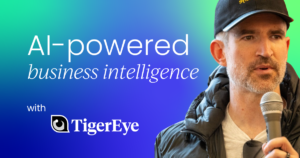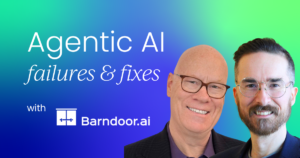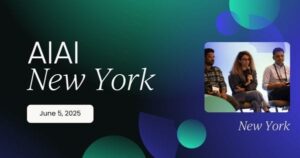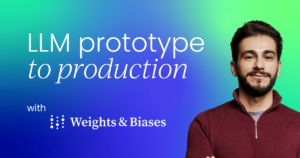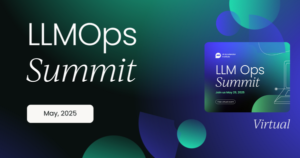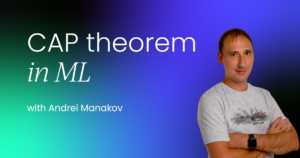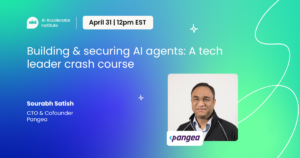[[{“value”:”
What do the streaming service Netflix, the business platform LinkedIn, and the dating portal Tinder have in common? All three use so-called recommender systems (RS).
RS can suggest exactly the right series for an evening of binge-watching. They show candidates for expanding your own business network who are dealing with the same topics.
Or they recommend potential partners who are suitable for a long-term relationship or for a nice evening for those looking. In the area of learning, and especially corporate learning, they can take existing e-learning platforms to a whole new level and provide valuable didactic support. And they can create the basis for forms of social learning.
Recommender systems are software solutions that suggest movies and series, potential dating partners, shopping products, the next online course, and other things that will most likely interest users. RS, therefore, intervenes in the human decision-making process and can guide it and even motivate it in the first place.
In the learning and corporate learning sector, recommender solutions are no longer a novelty, at least in theory. RS can be the technological basis for adaptive learning systems, which can be used to adapt content and teaching methods to the specific needs of learners, therefore creating the conditions for successful knowledge and skills development.
But RS can do even more. They can lay the foundation for successful collaborative learning, in which learners work together for their mutual benefit. How can such systems specifically support learners and trainers? And why are recommender systems much more worthwhile in corporate learning than on dating platforms like Tinder? I will show this in the following article.
Personalized and non-personalized recommendations
Not every recommendation is based on a recommender system that uses machine learning algorithms. A top 10 book recommendation from a newspaper editorial team or the top 3 most-watched series on a streaming platform is not the result of a recommender system.
Recommendations from ML-based solutions differ in that they provide personalized and, therefore, tailored suggestions that take into account the individual needs of users. Non-personalized recommendations, such as the aforementioned top 10 books and top 3 series, simply reflect trends but are not personalized suggestions.
Recommender systems work with various types of user data. These include explicit entries, which are collected via an online query, for example. The query may ask for the age of a user, his or her interests and previous experiences, gender, origin, and goals.
On the other hand, recommender systems also work with implicit data that results from usage behavior, such as previously viewed films and series (e.g., from streaming providers), past transactions (e.g., on e-commerce platforms), swiped people (e.g., on dating portals) or even completed online courses (e.g., e-learning).
Based on such data, recommendation systems can use algorithms to generate a list of suitable suggestions for each individual user. These results are based on a relevance assessment, e.g., an evaluation of the probability that a suggestion would match a user’s interests.
The recommender algorithms are optimized by feedback from the users themselves. This, in turn, includes implicit data (e.g., accepting or ignoring a suggestion) and explicit data (e.g., star ratings of suggestions and products).
Why are recommender systems so successful?
Recommender systems have been used for many years to serve the individual needs of users. The success of such systems is based on the realization that people like to rely on the recommendations of others, especially when making (every day) decisions.
No matter whether it’s a hotel for the next vacation, the next series for binge-watching at the weekend, or a pair of matching trousers for the summer. We are happy to be guided by other people (friends, family, influencers, like-minded people, role models, etc.) in our decisions and rely on their judgments. We are social beings and can often rely on the fact that what others (e.g. from our peer group) like and benefit from could also benefit and please us.
The aim of recommenders is to simulate precisely this recommendation behavior. The more relevant recommendations an algorithm provides, the more users’ trust in the recommender system grows.
This insight can be put to excellent use in corporate learning to present learners with the right content and, therefore, offer everyone an individually tailored and targeted learning path. In addition, RS can also suggest the right learning partner (partner, mentor, or tutor).
The use of recommender systems in social learning
There are some recommender solutions that provide valuable support for important goals and projects. Not only do they recommend learning content, but they also suggest the right learning partners to help each other master upcoming tasks. This is how forms of social learning are made possible.
Social learning is generally about bringing people together in some way for learning and training purposes. But people don’t always have to work on a task together in parallel to benefit from social learning. Sharing what you have learned and presenting it to others can also be categorized under this heading.
There are roughly two types of recommender systems used in corporate and social learning. Item-to-people recommender systems suggest to users which task they should work on next or which course might suit their interests and previous knowledge.
People-to-people recommender systems (sometimes also referred to as peer-to-peer recommender systems), on the other hand, suggest people, e.g. for collaborative tasks or for tutoring and mentoring.
Use cases for people-to-people recommender systems
The right learning partner
The use of automation technologies in corporate learning sometimes results in learners working in isolation and finding themselves in monologic learning situations because tasks that were previously performed by humans can now be carried out by AI solutions.
This includes, for example, providing help with problem-solving or giving feedback after a task has been completed. However, automation technologies such as people-to-people recommender systems can also be used to avoid this problem.
To celebrate learning successes together and protect against learning frustrations, motivate each other, and exchange ideas regularly, you need the right learning partner. Based on explicit and implicit data, such as age, previous knowledge, interests and completed learning content and progress, RS can suggest the right companion for each learner.
In doing so, the individual data is prioritized: for example, when selecting a learning partner, is previous learning success more important in the context than age or previous knowledge? What type of learning partner is needed in a particular situation? A mentor or a tutor or something completely different?
When it comes to initiating learning partnerships, so-called people-to-people reciprocal recommenders (1-to-1) are usually used. The special feature of this is that both potential learning partners must decide in favor of each other (!). This approach is comparable to a dating platform.
A learning partnership is only formed if both partners believe that it really makes sense based on selected characteristics and is desired by both. The decision for a learning partnership is, therefore, based on reciprocity.
The right team
To prevent learning isolation, collaborative learning settings are useful. For example, tasks are conceivable for which one or more learning partners are necessary. If other learners are needed to complete the task, the learner asks others for support. A recommender system then suggests the right learning partner(s) based on explicit and/or implicit data.
Although, on the one hand, the learning partnership is only temporary and, on the other hand, the knowledge available here is crucial for achieving the goal, and soft skills (e.g., previous experience with other learners) may not need to be taken into account, the use of a people-to-people reciprocal recommender is also recommended here so that no one is assigned to someone as a learning partner without consent.
The right tutor or mentor
If a learner gets stuck on a task and can’t get any further, a recommender system can suggest a tutor or mentor to them. This could be another learner who has already completed this task and is more advanced.
This learner now assists the learner seeking help as a tutor and helps them with the next step (peer tutoring). On the basis of learning progress and/or previous knowledge, a (peer) learner can be proposed as a tutor to help someone take the next step.
It is also possible, however, for the recommender system to select from a pool of mentors and make suggestions. Here, too, it makes sense to use a people-to-people reciprocal recommender because, on the one hand, mentors should not be overburdened, and, on the other hand, learners should be able to choose their mentors based on certain aspects.
On the mentor side, there is also a challenge that one colleague once called “the Tinder problem.” This should prevent highly qualified and “popular” mentors from being recommended too often and, therefore, being overwhelmed by the number of suggested contacts. This risk can be minimized by using data that provides information about a mentor’s workload.
Learners, in turn, should also be able to decide who becomes a constant companion based on their needs. These can be, for example, characteristics such as availability (is the mentor available at all?
Is he or she available for time-consuming mentoring or rather only for short sessions when a work step is stuck?) or the popularity of the mentor (reviews by previous mentees)? Is the mentor really an expert in a particular field and suitable for helping with a specific step in the process, or are they more of an expert in a different area?
With the help of people-to-people recommender systems, it is possible for companies to create a (global) learning network within their organization. Employees from different departments and locations can meet to learn.
As great as the benefits of recommender systems are in the learning context and for social learning, there are some important things to consider before and during the development and implementation of an RS.
The data (e.g., behavioral, demographic, psychographic, and geographic data) is used to create a user profile in order to present users with customized content based on segmentation.
What to watch out for
Because recommender systems collect and process user data, the utmost caution and sensitivity in handling this data is essential. The data (e.g., behavioral, demographic, psychographic, and geographic data) is used to create a user profile in order to present users with customized content based on segmentation.
It is essential to comply with the current legislation in your country regarding the handling of this sensitive data and to be transparent with your users about what data you collect and process from them.
Since AI works on the basis of algorithms that learn from existing data, there is a risk that this data will lead to systematic prejudices. For example, if the learning algorithms are based on historical data that shows gender- or ethnically-based inequalities, these distortions can be reproduced and reinforced in learning systems, for example.
This can lead to unfair treatment and discrimination against learners. There is a need to recognize these distortions and to take effective measures to compensate for or eliminate such biases in the algorithms.
In addition, there is the so-called “cold start problem”: for new users, there is often no data available to identify similar users. Suitable recommendations (item-to-people and people-to-people) are, therefore, particularly difficult at the beginning and not yet individualized, which can have a fundamentally negative impact on the quality of the recommendations given. Meanwhile, however, there are some solutions for how the cold start problem can be mastered technologically (see further reading: Dacrema et al.).
And why are people-to-people (reciprocal) recommenders more worthwhile for corporate learning than for Tinder?
The technology-supported search for a partner for life and an ideal learning partner are not so dissimilar and are based on the same technological solutions. Dating platforms such as Tinder advertise themselves as a way to find the right partner.
Successful social learning requires the right partner (hard and soft skills). Both searches are based on (reciprocal) people-to-people recommender systems. Ideally, however, a good recommender system is only used once in dating. After all, the goal of most dating platforms is to find the right partner as quickly as possible. Once you’ve found your soul mate, you don’t really need the recommender system anymore.
When it comes to learning, however, we are all a bit more ambitious. In corporate learning, we proclaim the imperative of “lifelong learning,” which is why recommender solutions are much more durable here than in the case of Tinder and Co.
The effort to support one’s own educational and learning processes with a recommender solution is much more worthwhile here because learning together is twice as much fun. So, when it comes to our learning partners, we are all polygamous in the end.
Used and recommended literature
Da Silva, F.L., Slodkowski, B.K., da Silva, K.K.A. et al. (2023). A systematic literature review on educational recommender systems for teaching and learning: research trends, limitations and opportunities. Educ Inf Technol 28, 3289–3328. https://doi.org/10.1007/s10639-022-11341-9
Dacrema, M.F., Cantador, I., Fernández-Tobías, I., Berkovsky, S., Cremonesi, P. (2022). Design and Evaluation of Cross-Domain Recommender Systems. In: Ricci, F., Rokach, L., Shapira, B. (eds) Recommender Systems Handbook. Springer, New York, NY. https://doi.org/10.1007/978-1-0716-2197-4_13
Koprinska, I., Yacef, K. (2022). People-to-People Reciprocal Recommenders. In: Ricci, F., Rokach, L., Shapira, B. (eds) Recommender Systems Handbook. Springer, New York, NY. https://doi.org/10.1007/978-1-0716-2197-4_11
“}]]
Recommender systems personalize content, from streaming to corporate learning, enhancing decisions, collaboration, and lifelong education.







